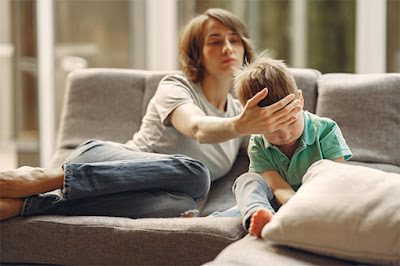When to worry about Child’s fever
Many doctors see anxious parents bringing in feverish children for care. In fevers, prompt treatment can be very important. But in most fevers, it is not dangerous, and it can even be considered useful because it naturally fights infections.
Causes of Fever
A fever is a healthy sign that the body is
doing well to fight and control illness. Through a chemical reaction, your body
raises its core temperature in an attempt to stop bad viruses and bacteria from
growing. Since viruses and bacteria can only reproduce normally when conditions
are more favorable, this is the most effective way to eliminate them.
Viruses are the most common cause of
fever in children. Young children may have 7 to 10 febrile viral illnesses each
year, especially if they are in daycare or school, where the virus is easily
spread among children. The second most common source of infection is bacteria.
Both types of infection can cause fever.
Fever can be a problem in very young children,
especially those under 3 months of age. This is because your immune system is
still developing and a fever can put you at risk for a serious infection. For
preschool and school-age children, pediatricians are less concerned unless the
fever lasts for more than 4 days. Watch out for symptoms such as extreme
lethargy/irritability, severe sore throat, increased coughing, and pain when
urinating.
The correct way to take a temperature
Knowing how to take a temperature correctly is
one of the most important parenting skills. In infants and children younger
than 1 year of age, it is important to feel comfortable taking a rectal
temperature.
Preheat a digital thermometer with
Vaseline to get the proper temperature. Next, insert the silver thermometer
into your baby's rectum about an inch apart. Hold gently for 1 minute, then
remove and read the temperature.
For children, 1 year
and older, the best and most accurate way to take a temperature is with an oral
digital thermometer or an ear drum (ear) thermometer. Ear thermometers work
well for toddlers and are generally accurate, but can be turned off for
children with a lot of earwax.
When to see a doctor
In babies younger than 2 months, a fever is
any temperature above 100.4 degrees (all temperatures in this article are in
Fahrenheit). It's also a concern if your newborn's temperature is below 96
degrees F. For an abnormal temperature in your newborn, call your doctor or go
to a pediatric urgent care or emergency room; your newborn should be seen right
away.
In infants and children older than 3 months, a
fever is a temperature greater than 101.5 degrees F. Call your doctor if your
child's temperature reaches 102.2 degrees F or higher.
Most fevers go away within 2 days. If
the fever persists for more than 4 days, call your doctor. Rash with symptoms
such as fever, vomiting or diarrhea, severe abdominal pain, headache, stiff
neck, sore throat, shortness of breath, pain with urination, localized pain
such as swollen joints, and purulent rash/dark skin in these cases, call your
doctor immediately. We fell when you pushed it. If your child is weak or
refuses to drink, also consult a doctor.





Comments
Post a Comment